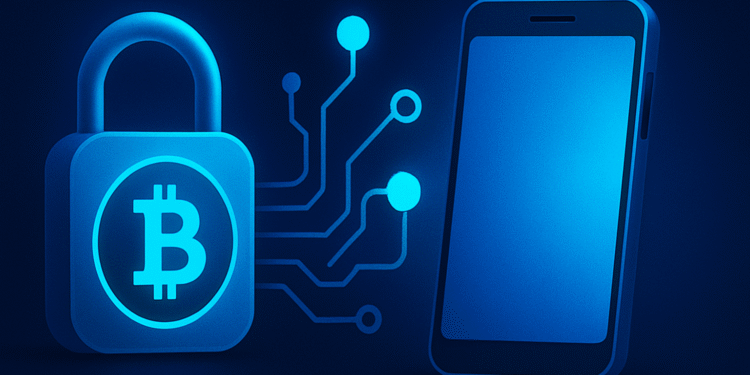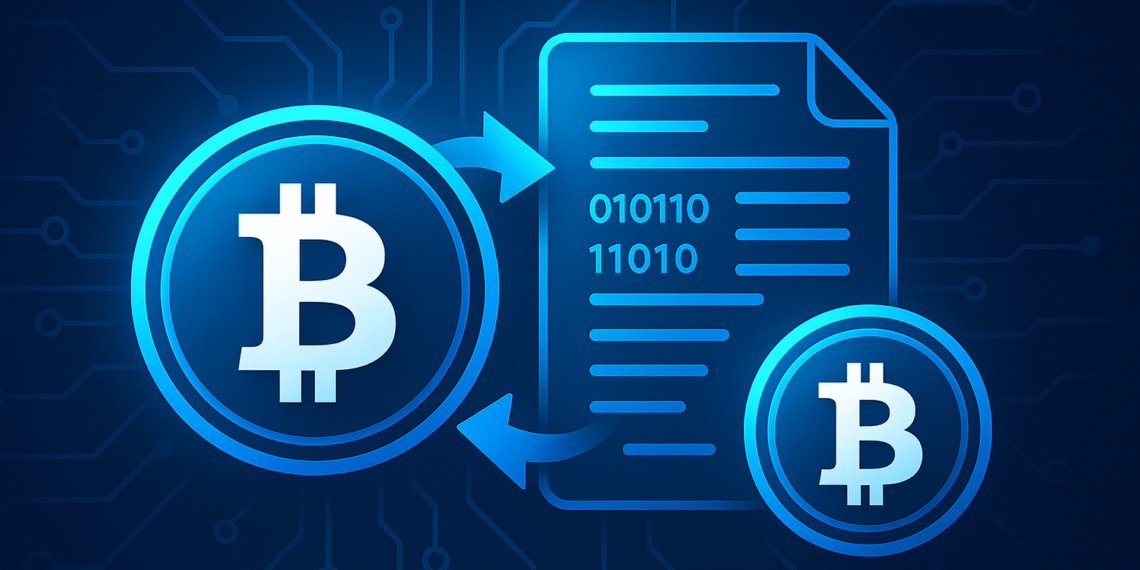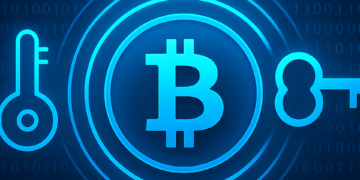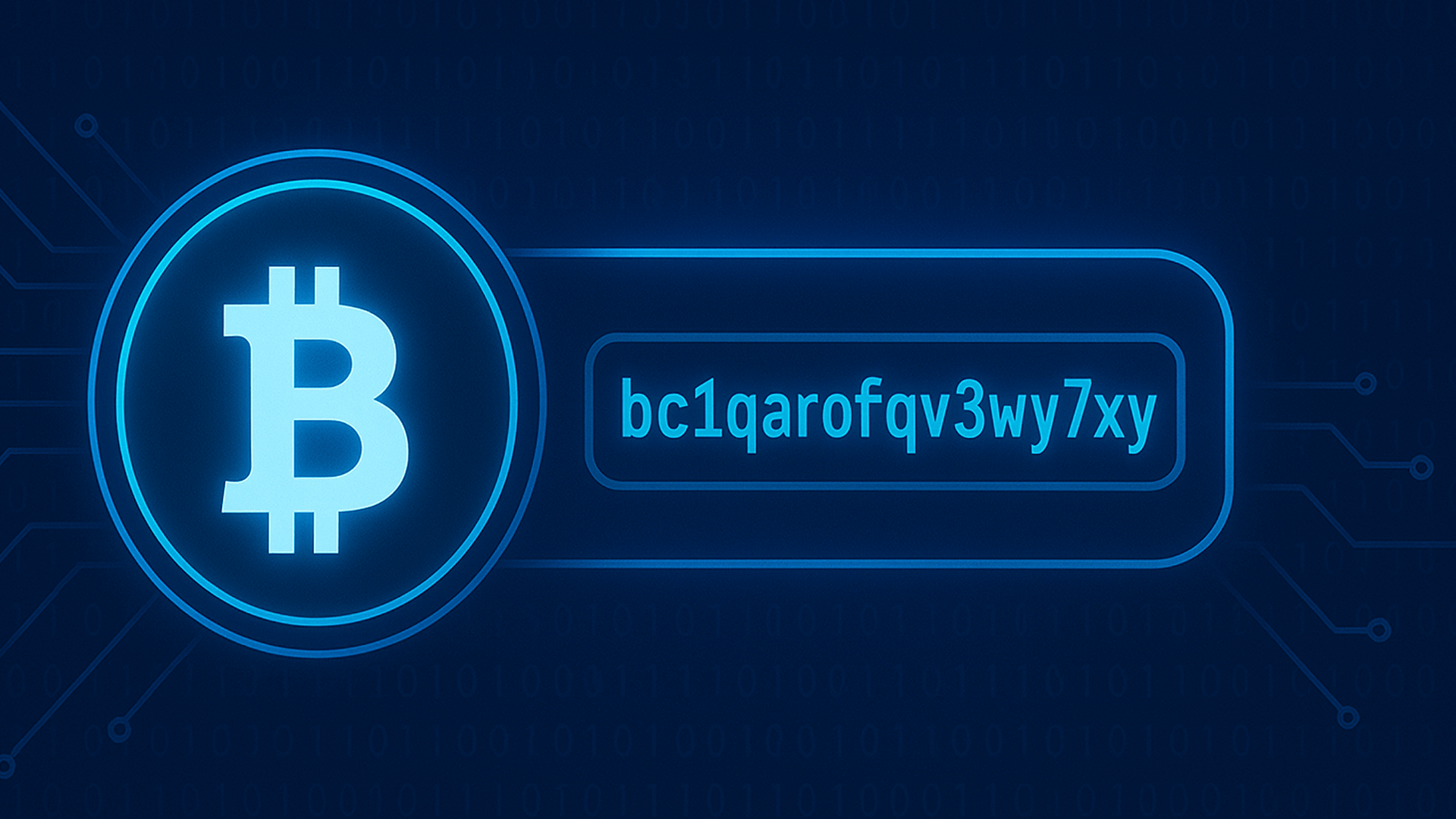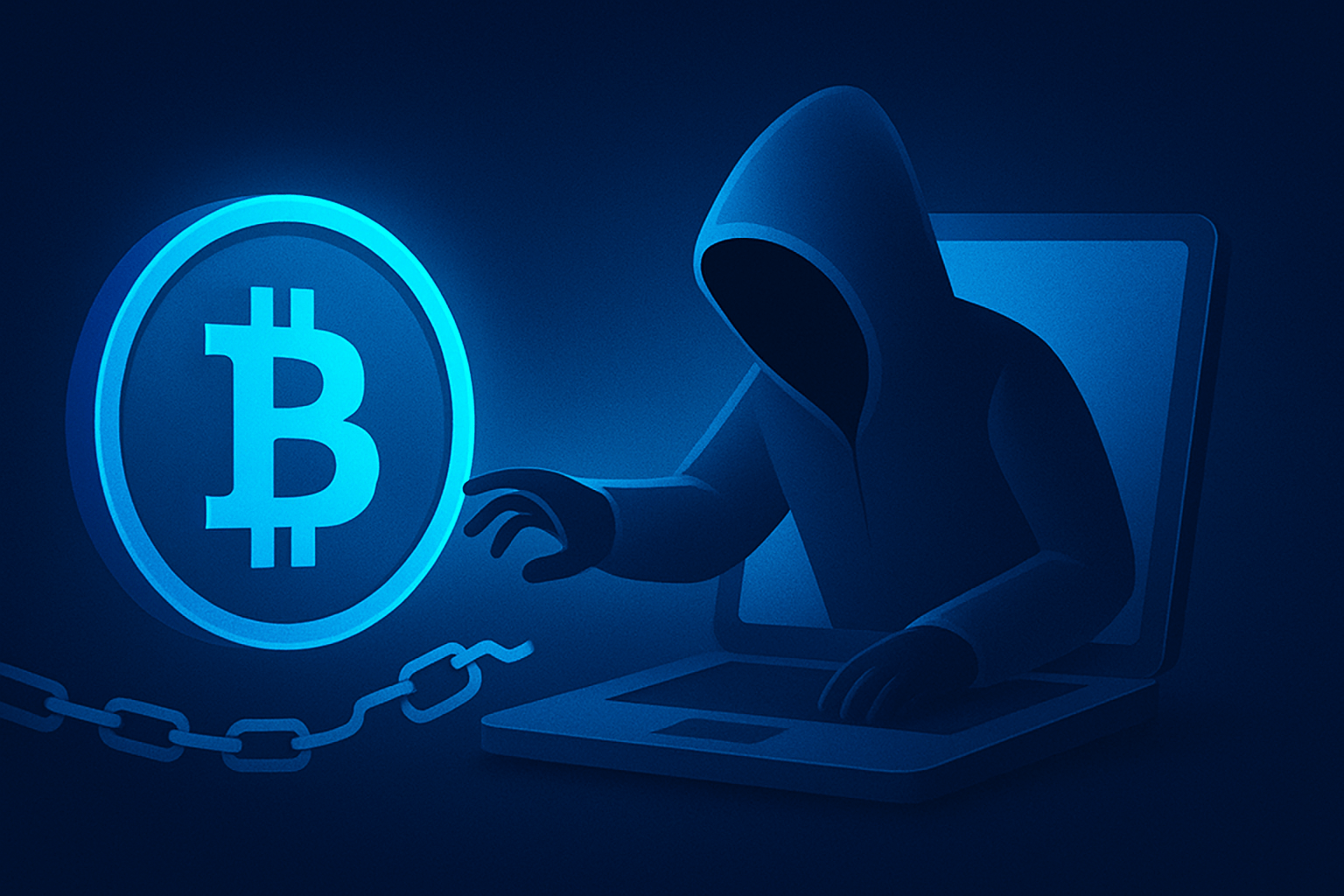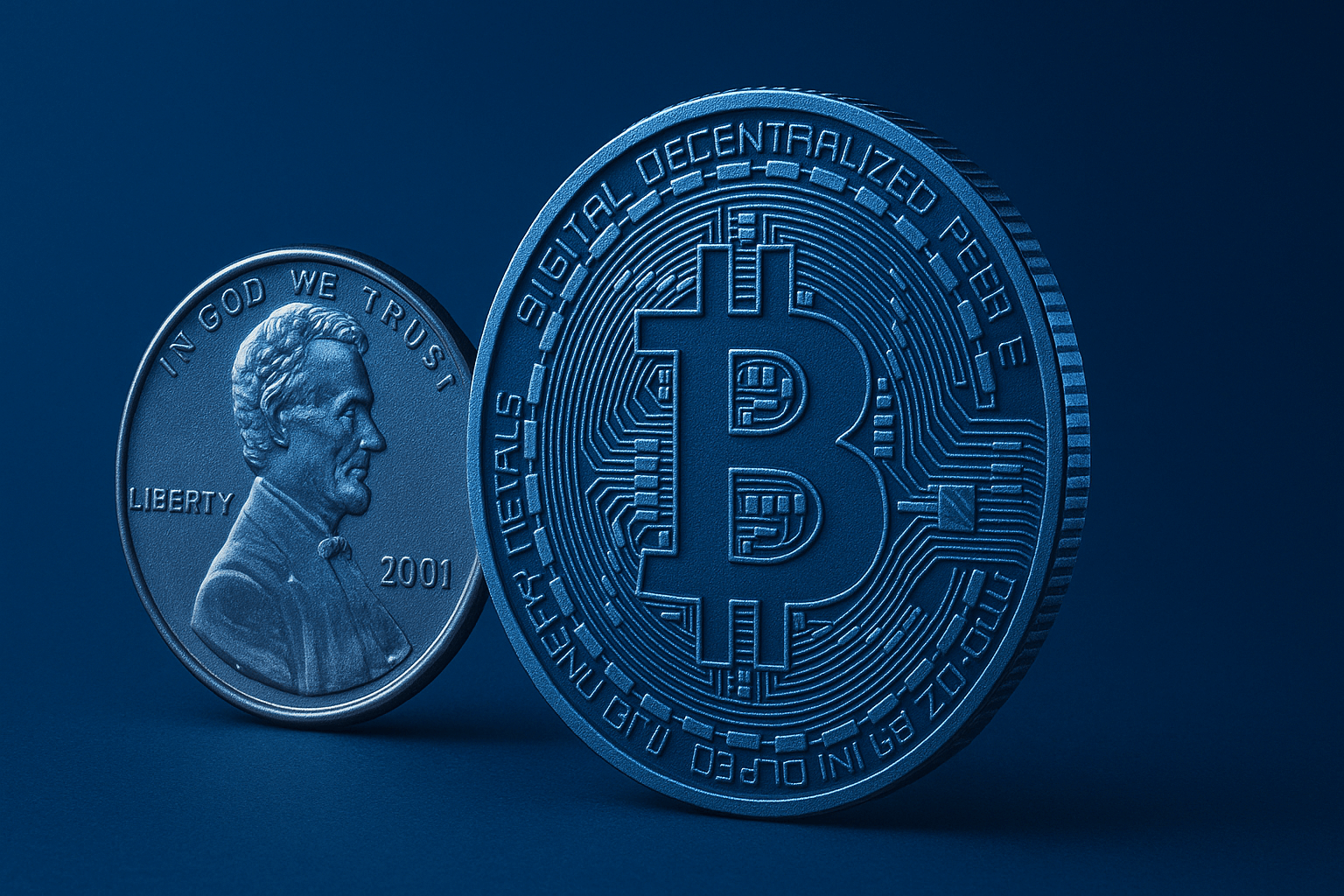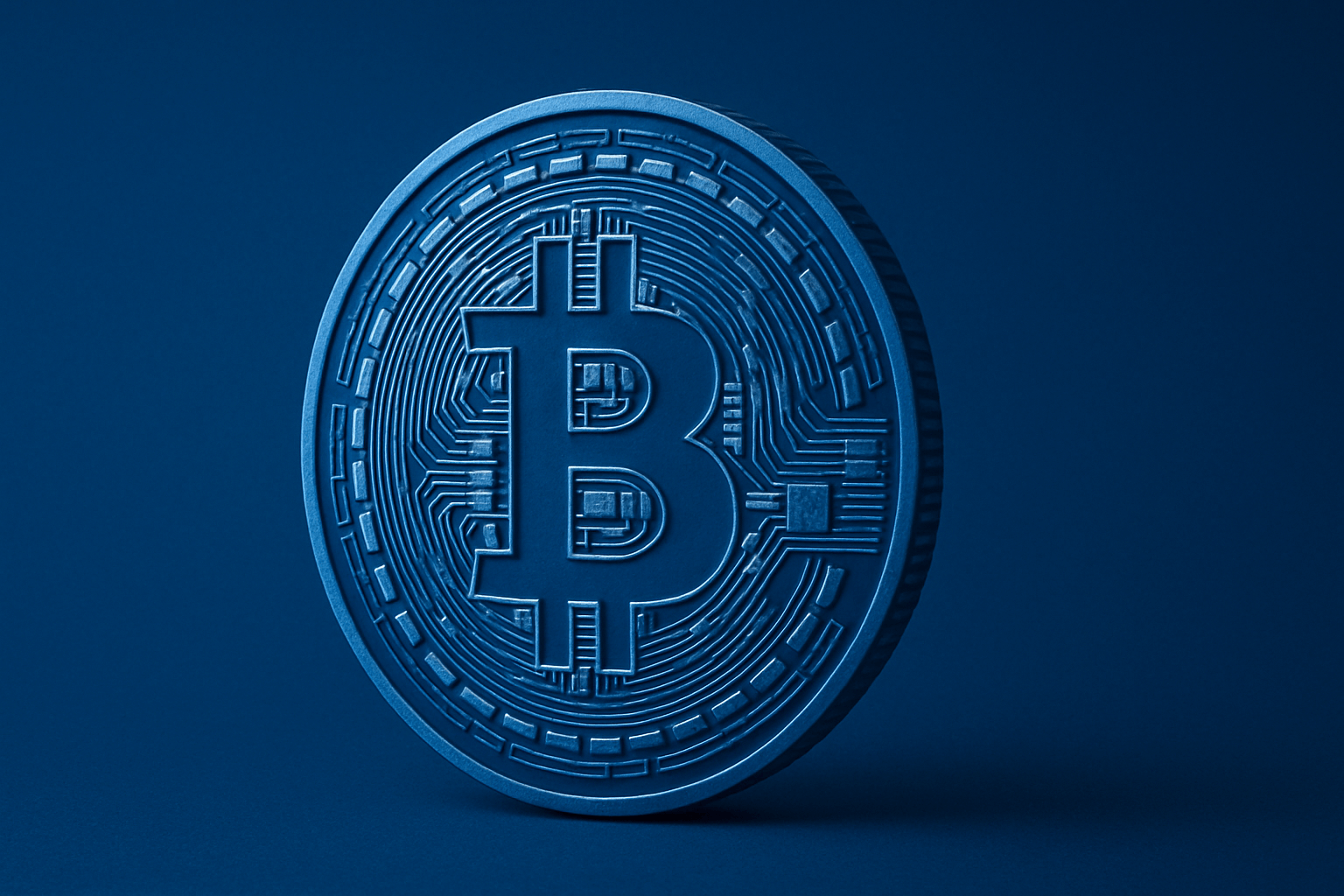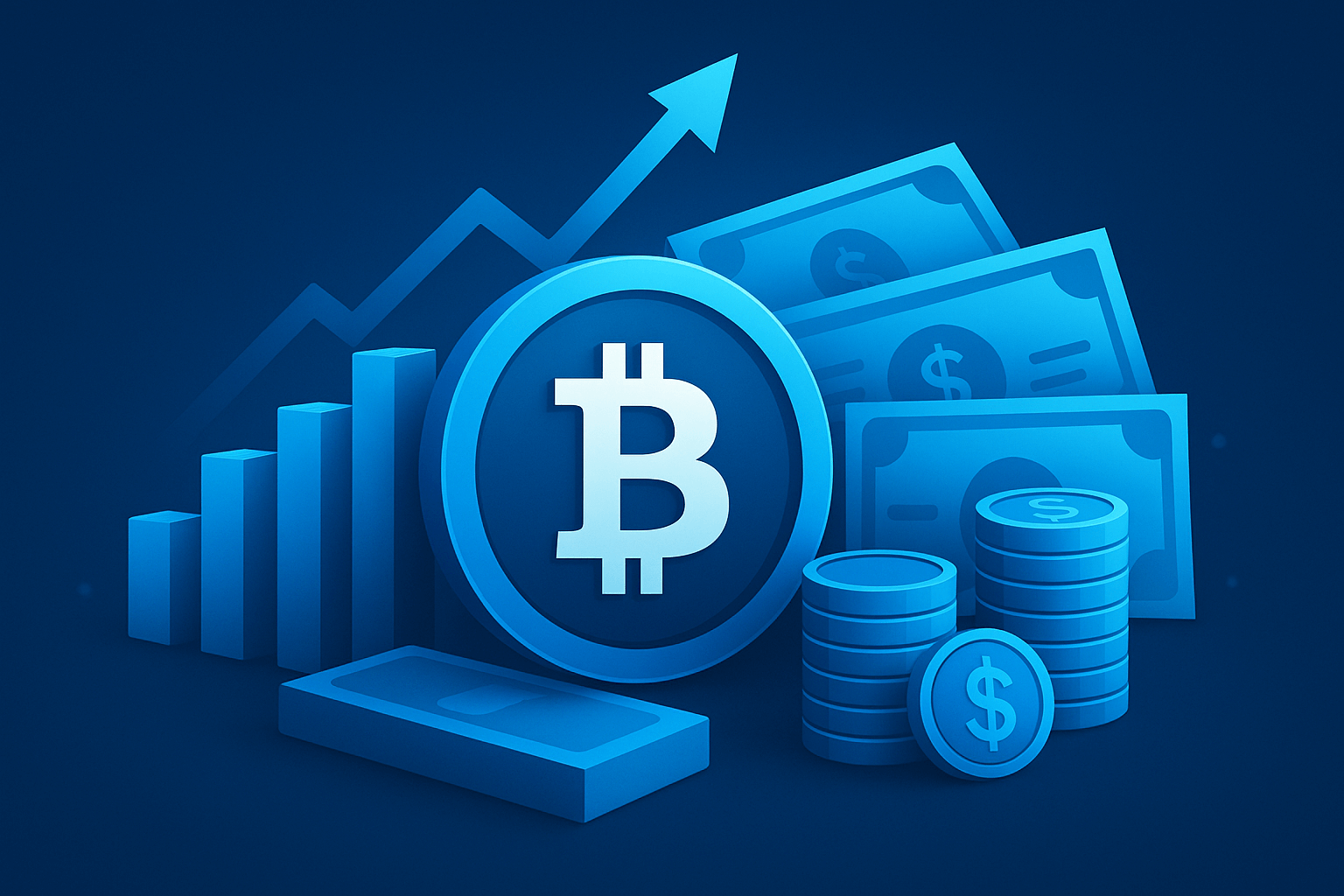Losing access to a wallet can feel like a door slamming shut on your savings, yet most cases aren’t hopeless. The path back is rarely a single magic button and more like a checklist: identify what you still have, match it with the right software, and work methodically without leaking secrets. Over the past year, we tested recovery flows, compared tools, and spoke with users who faced everything from forgotten passwords to water‑damaged phones. The pattern is consistent: people succeed when they slow down, document clues, and try options in a clean environment. This guide shows realistic routes that work, the traps to avoid, and how to secure your coins afterward so you never have to repeat the process.
When your Bitcoin wallet goes missing: what’s realistically recoverable
Not all losses are equal. Some situations are like losing your house keys while holding a spare; others are like trying to open a vault with no combination and no hints. Before touching any device, map what you have. The type of backup you possess determines the odds and the tools you’ll use. Most modern wallets follow shared standards, making cross‑app restoration possible when you choose the correct settings.
In practice, the highest success rates come from standard recovery phrases and intact wallet files. Problems escalate when you’re missing crucial parts like a passphrase or when the wallet used non‑standard formats. The lists below summarize what typically can and cannot be brought back, and how chances change based on your situation.
- What can be recovered:
- Wallets backed by a 12/18/24‑word recovery phrase that follows BIP39.
- Bitcoin Core wallet.dat files (especially with password hints or known patterns).
- Electrum seeds and compatible backups.
- Hardware wallet backups restored directly on the device.
- Cloud or app backups from mobile wallets that support secure sync.
- Watch‑only xpubs for viewing only (useful to confirm balances and addresses).
- What cannot be recovered:
- Funds when you only have a public address or transaction ID (viewing is possible; spending is not).
- Full seed reconstruction if you only know “some words” without exact positions, unless you know many exact words and can constrain the search.
- Exchange balances without going through the exchange’s account recovery process.
- Coins sent to the wrong chain or to unsupported scripts that no wallet recognizes.
- Situations at a glance:
- Lost device but you have the seed → high chance of success.
- Have wallet.dat but forgot passphrase → possible with strong hints and time.
- Have seed but maybe used a BIP39 passphrase (the “25th word”) → recoverable if you can recall or limit candidates.
- Only a public key or address → you can view, but you cannot spend.
- Damaged storage → lab data recovery might extract keys, but it’s not guaranteed.
How a Bitcoin wallet works in plain language
A wallet is more like a keychain than a bank account. Your recovery phrase is the master key. From it, software derives private keys that can sign transactions. Addresses are the public destinations people send money to, and they are mathematically derived from your keys. When you “restore a wallet,” you are re‑creating the same keychain on a new device to regain access to your funds on the blockchain.
Most modern mobile and hardware wallets use a standard called BIP39. That 12/18/24‑word phrase encodes the master secret in words humans can write down and read back. The same phrase can often be used in different apps if you choose the right settings. Another standard, called derivation paths, defines how addresses are created from the seed. If the path or address type doesn’t match what you used originally, the funds won’t show up even though the seed is correct.
There’s also an optional extra called a BIP39 passphrase. Think of it as a second lock on an identical‑looking door. Enter the same 12 words but a different passphrase, and you get a completely different wallet. Forget that passphrase, and the coins behind it are as inaccessible as if you lost the seed. Finally, some users export an xpub: a watch‑only key that reveals balances and transactions but cannot spend anything. Watch‑only setups are great for audits and monitoring without exposing private keys.
- Address formats matter:
- Legacy (starts with “1” — P2PKH).
- Nested SegWit (starts with “3” — P2SH‑P2WPKH).
- Native SegWit (starts with “bc1q” — P2WPKH).
- Taproot (starts with “bc1p” — P2TR).
Different wallet brands default to different address types, and newer formats usually mean lower fees and modern features. During recovery, match both the derivation path (the route) and the address type (the kind of destination) to see your past transactions. If you used many addresses without receiving to them, adjust the “gap limit,” which is the number of unused addresses a wallet scans ahead to find your history.
Seed phrase vs private keys vs wallet.dat
The recovery phrase is the most portable backup. With BIP39, many wallets can re‑create the same keys from those words. It’s designed for humans to store and restore without relying on a single app. That’s why hardware devices encourage you to write down your words and never photograph them.
Individual private keys are different. They correspond to single addresses and are tedious to back up. Some older wallets exported private keys for each address, but if you miss one, any funds sent there remain stranded. Wallet files such as Bitcoin Core’s wallet.dat store numerous keys, often encrypted with a password you set in the app. They are powerful but app‑specific. Restoring a wallet.dat typically requires Bitcoin Core or specialized tools.
Address formats and derivation in practice
The most common reason funds “don’t show up” after a restore is a mismatch in derivation path or address type. You might restore the correct seed but pick a legacy path when your deposits were to Native SegWit, or vice versa. When we tested cross‑restores with hardware wallets and Sparrow, balances appeared instantly once the correct path—like m/84’/0’/0’ for Native SegWit—was selected.
Another pitfall is the gap limit. Wallets generally scan a window of future addresses. If you created many receive addresses without using them, the wallet may stop scanning before it reaches the one that holds your funds. In Electrum and Sparrow, increasing the gap limit often reveals the missing transactions. Think of it as telling the wallet to look further down the road for your mailbox.
| Format/prefix | Script type | Typical path (mainnet) | Pros | Cons |
| 1… (legacy) | P2PKH | m/44’/0’/0’ | Broad compatibility | Higher fees, older standard |
| 3… (nested) | P2SH‑P2WPKH | m/49’/0’/0’ | SegWit savings, wide support | Less efficient than native SegWit |
| bc1q… (native) | P2WPKH | m/84’/0’/0’ | Lower fees, modern default | Some older services unsupported |
| bc1p… (Taproot) | P2TR | m/86’/0’/0’ | Advanced features | Newer; compatibility varies |
Safety checklist before any bitcoin wallet recovery attempt
Before you type a single word of your recovery phrase, create a safe workspace. Most failures happen not because the seed was wrong, but because it was entered into a compromised computer or a fake app. Treat your seed like a bearer bond: anyone who sees it can move your coins. The goal is to eliminate malware, verify software sources, and preserve originals so you can try multiple methods if the first one fails.
Work offline first, then carefully reconnect only to verify balances or broadcast a transaction. Keep a written log: wallet brand, model, approximate creation date, address examples, transaction IDs, and any memory fragments about passphrases or passwords. Small hints—like a capital letter you always used or a favorite year—can save days of guessing later.
- Key precautions:
- Work offline: never type a seed into a website or random tool.
- Use a clean device: scan for malware or use a fresh machine or a live OS.
- Verify software: download from official sites and check signatures or hashes.
- Record everything: addresses, dates, hints, txids, and the wallet brand.
- Clone before poking: image drives and phones to preserve data for later attempts.
- Beware impostors: legitimate support will never ask for your seed.
Build a clean recovery setup
Your safest option is to restore the seed directly on a reputable hardware wallet with an offline screen and buttons. If you must use a computer, consider a live Linux USB session that forgets changes after reboot. We tested a recovery on a spare laptop with Wi‑Fi disabled until the moment we needed to check balances; the peace of mind was worth the extra steps.
Keep the device offline as you enter the recovery phrase. Prepare any tools in advance, like installers for Sparrow or Electrum, then disconnect the network. Only reconnect once you have derived addresses and want to verify activity. If your funds appear, move them to a freshly created wallet to minimize future risk from that machine.
Verify the real app or firmware
Fake apps steal seeds every week. Confirm URLs letter by letter and prefer bookmarked links. Some wallets publish PGP signatures and checksums; verify them if you can. On mobile, check the developer name and read recent reviews for red flags like “asked for my seed to upgrade.” For hardware devices, update firmware only from the manufacturer and never via third‑party links shared in forums or chats.
When testing downloads, we compared hash values provided by developers against the files we retrieved. This small habit can block a supply‑chain trick where attackers swap a binary on a mirror site. The extra minute pays for itself if it prevents a disaster.
Preserve originals
Do not “clean up” old files before you make backups. Create sector‑by‑sector images of disks and export full phone backups. If you have a wallet.dat, copy it to as many safe locations as needed and work on duplicates. Each recovery attempt should be reversible so that a new idea tomorrow isn’t blocked by a corrupted file today.
For phones and SSDs that show signs of failure, stop using them immediately. Repeated power cycles can make a bad situation worse by causing additional data loss. Cloning first gives you a snapshot for forensic tools later, even if today’s attempt fails.
Choose your scenario and follow the steps
Every recovery path starts with an inventory: do you have a seed phrase, a wallet file, an app backup, or at least a watch‑only key? With that answer, you can select the route with the best odds. Do the least risky step first. Only escalate—like attempting password cracking or sending a device to a lab—if the safer options did not work.
Keep your notes open and write down exactly what you tried: the app version, the derivation paths tested, and the address formats. This creates a trail you can share with a trusted helper or a vetted professional without revealing your seed.
You have the 12/24‑word seed phrase
Start by validating the words. They should be from the standard BIP39 list, and the order matters. Watch for look‑alikes like “dawn” vs “down.” Sparrow and Electrum will complain if a checksum is wrong, which is a clue you misread a word. If the phrase passes validation, choose a reputable wallet for restore—preferably a hardware device that never shows the seed to your computer.
During restoration, test the common derivation paths and address types:
- Legacy: m/44’/0’/0’ (addresses starting with “1”).
- Nested SegWit: m/49’/0’/0’ (addresses starting with “3”).
- Native SegWit: m/84’/0’/0’ (addresses starting with “bc1q”).
- Taproot: m/86’/0’/0’ (addresses starting with “bc1p”).
Compare derived addresses with any known deposit or a transaction you can find on a block explorer. Once you see your history, create a fresh wallet and move the funds. We compared fees for a simple sweep using Native SegWit and found them noticeably lower than legacy formats at the same mempool conditions.
You have the seed phrase but suspect a “25th word” passphrase
If you restore your words and see zero balance, a passphrase may have been used. This extra field is case‑sensitive and space‑sensitive, so “Ocean” and “ocean” are different. Try candidates you would have used: a favorite phrase, a modified password, or a pattern like adding “!” at the end. Each attempt re‑creates a new wallet; if you pick the right one, your addresses will match.
For systematic trials, use btcrecover with a constrained candidate list. We tested btcrecover on a laptop with a small set of likely phrases and paused/resumed as needed without losing progress. Never share seeds with anyone or upload them to online crackers. If you documented a hint, translate it into variants: capitalization, number suffixes, or replacing letters with symbols.
You forgot the wallet password but have the seed
In most wallets, the app password protects local access, not the blockchain keys themselves. Restoring from the seed bypasses the forgotten app password. Do this on a clean device. Once you confirm funds are visible, set a new strong password and consider migrating coins to a new wallet to reduce exposure if the old device was compromised.
Make the new password distinct from email and exchange logins. A password manager helps you avoid reusing patterns that attackers guess easily. Document that you performed a fresh restore in your notes so you can recreate this success later if needed.
You only have an old Bitcoin Core wallet.dat
Install Bitcoin Core (matching or newer version) and place wallet.dat in the wallets directory. Use rescan options so Core searches the blockchain for your historical addresses. This step can take hours or days depending on your node’s state and disk speed. We timed a rescan on a fast SSD with a pruned node—it took several hours but worked cleanly.
If the file is password‑protected and you forgot it, gather hints and try structured guesses. btcrecover supports Core wallets, and you can feed it rules like “capitalize the first letter” or “append 2019.” If the wallet.dat is corrupt, try the salvagewallet command; when that fails, consider forensic tools or labs. Work on copies, not the original.
You used Electrum and have a seed or xpub
Electrum seeds often encode the script type. Restore in Electrum, pick the appropriate address type (legacy, SegWit), and adjust the gap limit if needed. We increased the gap limit to 100 in a test case and a “missing” transaction appeared immediately.
If you only have an xpub, you can import it as watch‑only to confirm balances and transactions. Spending requires the corresponding seed or private keys, so search backups, password managers, and notes for the original seed or keystore file that goes with that xpub.
The device is lost or stolen, but you enabled cloud/app backup
Some mobile wallets offer encrypted cloud backups via iCloud or Google Drive. Reinstall the app, sign in to the same cloud account, and follow the prompt to restore. You may need both your cloud credentials and the app PIN you used. Read the app’s official documentation, not third‑party guides, to avoid phishing.
If you suspect the device might be compromised, restore first to confirm access, then move funds to a new wallet. We tested a restore for a mobile wallet with cloud backup; the app decrypted the key after cloud login and PIN entry, but we still swept to a hardware wallet for long‑term safety.
The phone/computer is physically damaged
Electrical and water damage can be deceptive. Each attempt to power on might cause more corrosion or trigger data loss on solid‑state drives. If the seed is not backed up elsewhere, consult a reputable lab that can attempt chip‑off or board‑level recovery. Ask for a written estimate and make them agree in writing not to access any wallet applications if keys are recovered.
Labs vary widely in skill and ethics. Read reviews, ask about success rates with similar devices, and retain the right to observe or receive a forensic image. Sometimes the goal is not full device repair but extracting just enough data to recover the wallet file or app keystore.
You remember part of a password and have an encrypted wallet file
Targeted password recovery works well when you have partial knowledge: a base word, a year, or specific substitutions. Tools like btcrecover or hashcat can try combinations at high speed, especially with GPU acceleration. Build smart wordlists from your habits: pet names, favorite teams, and the punctuation you tend to add.
We ran a controlled btcrecover test with a partial pattern and recovered access in under an hour. Without hints, the search space grows too large very quickly. Never send your files or seeds to strangers offering “guaranteed recovery.” Legitimate helpers will show their process without asking for custody of your keys.
The wallet was on an exchange account
If the coins were never in a self‑custody wallet (no seed phrase), on‑chain methods won’t help. Follow the exchange’s account recovery flow with ID checks and device verification. Prepare screenshots of past deposits and any reference codes that can prove ownership. Work only through official support pages to avoid impersonators.
Useful official resources: https://help.coinbase.com, https://www.binance.com/en/support, and https://support.kraken.com. Exchanges change procedures regularly, so rely on their current instructions, not old forum posts.
Inheritance or funds of a deceased relative
Start with the places people often store secrets: desk drawers, safes, password managers, and email accounts. Search devices for wallet app names, wallet.dat, seed photos (common but risky), and note files that might include hints. If you find an xpub, you can track balances; if you find the seed, treat it as highly sensitive and proceed on a clean device.
Coordinate with an attorney to ensure lawful access, especially across jurisdictions. Avoid posting details publicly where scammers can target you. Consider multi‑party recovery with a trusted executor if the estate is complex or spans multiple wallets.
Tools and techniques that actually help
The right tools reduce guesswork and make your attempts testable and repeatable. Favor open‑source, offline‑capable software maintained by known teams. Keep a log of tool versions you used and the exact settings that produced each outcome so you can replicate success or adjust when something doesn’t line up.
For price checks or confirming transaction timing during a move, a quick glance at market data from CoinGecko (https://www.coingecko.com) helps you choose a sensible fee or avoid moving during extreme volatility. For network activity trends, Glassnode (https://glassnode.com) offers metrics that can hint at congestion and fee pressure.
BIP39 seed validation (offline)
Validating a seed means confirming that each word is on the BIP39 list and that the checksum is correct. Do this offline, ideally on a device that will never touch the internet with the seed in memory. Many hardware wallets validate as part of the restore process. Sparrow and Electrum can also indicate checksum errors if you enter the words incorrectly.
If a word seems off, compare against the official BIP39 word list and look for likely confusions like “color/colour” (only “color” is in BIP39). A single character can be the difference between a valid and invalid phrase, and the error messages you see are clues, not dead ends.
Derivation path explorers and address scanning
Sparrow and Electrum make it easy to test multiple paths and script types. Import the seed on an offline machine, then try m/44’, m/49’, m/84’, and m/86’. If none match, increase the gap limit. In a test where a user generated many addresses without using them, bumping the gap limit to 200 finally revealed the deposits.
Note any address you recognize from past deposits and compare it to the list the wallet derives. If they match, you are on the right route. If not, keep notes and move to the next likely path. This step‑by‑step approach is faster and safer than random trial and error.
Password recovery with btcrecover
btcrecover supports many wallet types and lets you craft targeted guesses in a controlled way. You can set rules like “capitalize first letter” or “replace a with @,” and you can pause and resume safely. Logging attempts helps you avoid repeating the same failed patterns.
GPU acceleration speeds things up but also increases noise and heat. We ran tests on a dedicated machine to avoid slowing down our primary computer. Keep your wordlists locally and never upload encrypted wallets or seeds to a service you do not fully control.
Forensic file carving for wallet files
On old disks, tools like Photorec, TestDisk, and bulk_extractor can locate remnants of wallet.dat or key material. Work from cloned images so you do not alter the original evidence. Even when filenames are gone, these tools can sometimes recover identifiable data structures.
Expect noise: not every fragment is a complete wallet, and encryption without the password remains a barrier. Still, we’ve seen cases where a partial recovery gave enough hints to reconstruct a usable set of keys or to guide password attempts.
Safe hardware wallet restores
Restoring directly on the hardware wallet means the seed never touches your computer. Confirm a receive address on the device screen, not just in the app, then cross‑check it with a known transaction. This is the gold standard for safety during recovery.
Pros include strong isolation and clear on‑screen prompts. Cons include learning curves and the need to buy a device if you don’t have one already. In our tests, moving recovered funds to a brand‑new hardware wallet took minutes and immediately reduced risk.
Watch‑only wallets for verification
Import an xpub or a set of addresses into a watch‑only wallet to monitor balances without exposing private keys. This is useful for staged recoveries: first confirm that the derivation path is correct and the funds are visible; then, on a separate step, bring the signing keys online to move funds.
Watch‑only setups are also helpful for accountants or family members who need insight without spending authority. Just remember: view access is not spend access.
Professional bitcoin wallet recovery services: how to vet
Good specialists explain their methodology, provide references, and use non‑custodial proofs. Ask them to sign a message from a derived address without taking your seed—this demonstrates skill without surrendering control. Require a signed NDA and insist on transparent fees, often success‑based.
Red flags are sadly common: requests for your full seed up front, pressure tactics, and promises that sound like magic. No one can “hack miners” to unlock your wallet. If a claim violates how Bitcoin works, walk away.
Red flags and recovery myths
Misconceptions waste time and attract scammers. Bitcoin’s security model is simple at its core: if you don’t control the private keys, you can’t spend the coins. Everything else—apps, files, backup methods—exists to manage or restore those keys. Recognize myths early and you’ll focus on actions that can actually work.
- “Miners or support can unlock my wallet” → false. There is no backdoor.
- “I can spend with just a public key or address” → false. Viewing is not spending.
- “Twelve words are always BIP39” → not always. Some apps use non‑standard formats; match the wallet brand and version.
- “Any seed works in any wallet” → only if it’s BIP39 and you pick the correct path and script. Older Electrum seeds should be restored in Electrum.
When someone offers to “reprogram the blockchain” for a fee, it’s a scam. Stick to verifiable methods and software with real histories and maintainers.
When bitcoin wallet recovery is unlikely—and why
Sometimes the math is against you. The space of possible 12‑word seeds is astronomically large. Without strong hints, blind guessing is effectively impossible. The same applies to passphrases: a well‑chosen, unknown passphrase is not something you can brute‑force in any reasonable time.
Recognize stopping points early so you don’t burn money and hope. If you have no seed, no wallet files, and no credible hints, focus on future prevention. After you’ve tried all derivation paths, address formats, gap limits, and reasonable lab attempts, accept that odds may be too low to justify further spending.
Timelines and costs you should expect
Expectations help you plan. Some recoveries take an afternoon; others take weeks. Time mostly depends on whether you need a blockchain rescan, password cracking, or professional hardware work. Costs vary from free (self‑service restores) to thousands of dollars (lab recovery), so weigh the value of the funds against the effort.
| Scenario | Typical time | Typical cost | Notes |
| Seed restore with known path | 15–60 minutes | Free to minimal | Hardware wallet recommended for safety |
| wallet.dat rescan in Bitcoin Core | Hours to days | Free (time cost) | Faster with a synced node and SSD |
| Password cracking with good hints | Hours to weeks | Free to moderate | GPU helps; focus on constrained candidates |
| Data recovery lab | Days to weeks | Hundreds to thousands | Get a written estimate and NDA |
| Professional recovery service | Varies | Success‑based fees | Demand non‑custodial proofs |
Secure your future self after you succeed
Once you regain access, don’t stop at celebration. Lock in the lessons while they’re fresh. A clean, documented setup today prevents panic tomorrow. Test the backups you create, write down the exact derivation details, and consider an inheritance plan so loved ones can navigate access without guesswork.
Make a small calendar reminder: a yearly check can be the difference between smooth sailing and another anxious search for clues. It takes one hour and pays off for years.
Make tested backups
Use at least two offline media—paper plus a metal backup—and add an encrypted digital copy if you have a robust key management process. Don’t just store them; test a restore on an air‑gapped device to prove the backup works. We ran a test restore from a metal plate and confirmed a known receive address derived correctly.
Store backups in separate locations to prevent a single disaster from wiping them all. Label envelopes with neutral language so they don’t draw attention, and keep a sealed copy with a trusted person if appropriate.
Use a BIP39 passphrase wisely
A passphrase adds strong security, but only if you can store it safely and separately. Document that you used a passphrase and where the instructions to retrieve it live. Test a full restore with the passphrase to avoid finding out later that you misremembered capitalization.
If you struggle with secret storage, skip the passphrase and focus on physical security and multisig instead. The best security is the one you can operate reliably even under stress.
Document derivation details
Write down the wallet brand and version, the address format you used, and the exact derivation path (for example, m/84’/0’/0’). Include a couple of sample receive addresses. These breadcrumbs save hours if you ever need to restore on different software.
Keep this document separate from your seed. It’s harmless on its own but priceless during recovery.
Inheritance and emergency access
Plan for the day someone else might need to act. Options include naming a trusted executor, writing sealed instructions, using multisig with distributed keys, or employing regulated custodial solutions. Walk through the process at least once with your executor so they know the steps without improvisation.
For larger holdings, consider professional estate planning that includes digital assets. Clarity and simplicity prevent mistakes when emotions run high.
Annual health check
Once a year, confirm that your backups are intact and legible. Verify that you can derive a known address from the seed and passphrase (if used) on an offline device. Check that password manager entries and two‑factor authentication methods still work.
Update notes if you change wallets or adopt new address types. Small maintenance beats emergency surgery.
Quick reference: bitcoin wallet recovery decision tree
Here’s a compact route map you can follow without second‑guessing each fork. Print it, tape it near your safe, and hand a copy to your future self. The key is to start with what you have, then move to the next logical step while keeping everything reversible.
- Do you have a seed?
- Yes → restore on a hardware wallet or offline app; test common paths (44’/49’/84’/86’); check for a passphrase.
- No → do you have wallet files or app backups?
- Yes → try app‑specific recovery, structured password guesses with btcrecover, and lab imaging if devices are damaged.
- No → was it on an exchange? → start the exchange’s account recovery flow.
- At any point → if funds appear, move them to a fresh, documented wallet.
Helpful mini‑cases (what success looks like)
Real recoveries are rarely dramatic; they’re a string of small, correct decisions. These mini‑cases show how the right tweak—or a remembered hint—can transform “it’s gone” into a straightforward transfer to a new wallet.
Case 1: Seed with wrong path. A user restored 24 words into Sparrow and saw an empty wallet. Switching from legacy m/44’ to Native SegWit m/84’ instantly revealed the familiar bc1q address and past deposits.
Case 2: Electrum passphrase remembered. An Electrum user had a valid seed but no balance. After trying variations of a favorite phrase, capitalizing the first letter of the second word unlocked the familiar transaction history.
Case 3: Old laptop with Core wallet.dat. The wallet was encrypted and the password forgotten. salvagewallet recovered keys; btcrecover found the passphrase by testing a date pattern with “!” at the end. A rescan synced the history and confirmed the funds.
Case 4: Cracked phone. A mobile wallet with no seed written down, but the user suspected an app backup existed. A lab performed chip‑off, recovered the app keystore, and the user swept funds to a new hardware wallet. The invoice and NDA were kept on file for legal and insurance purposes.
Your best next step today
Momentum matters. Make an inventory of what you have—seed, files, devices, addresses—and set up a clean environment. Verify you are downloading apps from official websites. Start with the least risky path, such as a seed restore on a hardware wallet, and move outward only if necessary. If you hit a wall, pause, improve your notes, and consider a vetted professional who can offer staged, non‑custodial proofs of progress.
FAQ
These quick answers address the questions people ask most when they’re stuck. Use them as a compass, then circle back to the detailed sections above for step‑by‑step guidance.
Can I recover a bitcoin wallet without a seed phrase?
Only if you have another key source, such as a wallet.dat, exported private keys, or an app/cloud backup. A public address or transaction ID alone is not enough to spend; it’s only proof that funds exist somewhere on the chain.
How do I recover a bitcoin wallet with only a public key or address?
You can’t spend using only public information. Create a watch‑only wallet to monitor balances and transactions while you search for the seed, private keys, or wallet file that grants spending authority.
I restored my seed but see zero balance—what now?
Test different address types and derivation paths (44’/49’/84’/86’), increase the gap limit, and consider whether you used a BIP39 passphrase. Confirm derived addresses against a known deposit or transaction you can find on a block explorer.
Is it possible to brute‑force a 12‑word seed?
Practically no. The search space is enormous. The only feasible cases are when you know most of the words and their positions, allowing a constrained search with tools like btcrecover.
I have wallet.dat but forgot the password. Any hope?
Yes, if you have strong hints. Use btcrecover with targeted rules and let it run. Without hints, the search space grows very quickly, and chances drop.
Can I restore a seed from one wallet brand to another?
If it’s BIP39 and you match the derivation path and script type, yes. App‑specific seeds—such as older Electrum seeds—should be restored using the same app to avoid compatibility issues.
Are online “recovery services” safe?
Many are scams. Vet thoroughly: demand NDAs, references, and non‑custodial proofs like message signing. Never share your full seed with anyone who can’t demonstrate competence without it.
How do I verify the right derivation path?
Use Sparrow or Electrum to derive addresses from your seed and compare them with a known deposit address or transaction. If they match, you’re on the right path; if not, try the next standard path and script type.
Do I need to run a full Bitcoin node to restore?
No. Many wallets function as light clients. For wallet.dat, Bitcoin Core is usually required, and rescans are faster when your node is synced. For other wallets, you can often restore without a full node.
Should I move funds after recovery?
Yes. Sweep coins to a new, well‑documented wallet to reduce risk from any compromised devices or old backups. Then implement tested backups and an inheritance plan so future access is painless.
Additional references for context and safety checks: market data at https://www.coingecko.com, network metrics at https://glassnode.com, and official exchange support at https://help.coinbase.com, https://www.binance.com/en/support, and https://support.kraken.com.
Not financial advice

